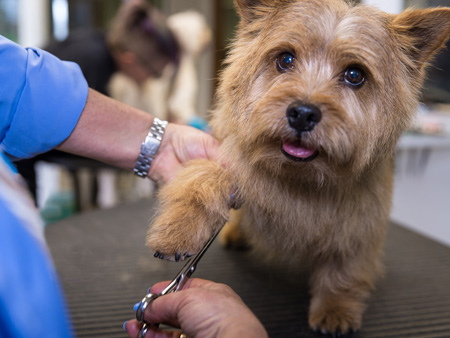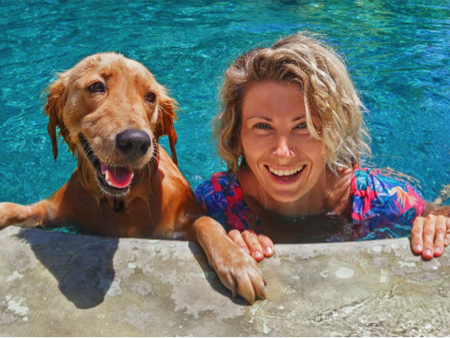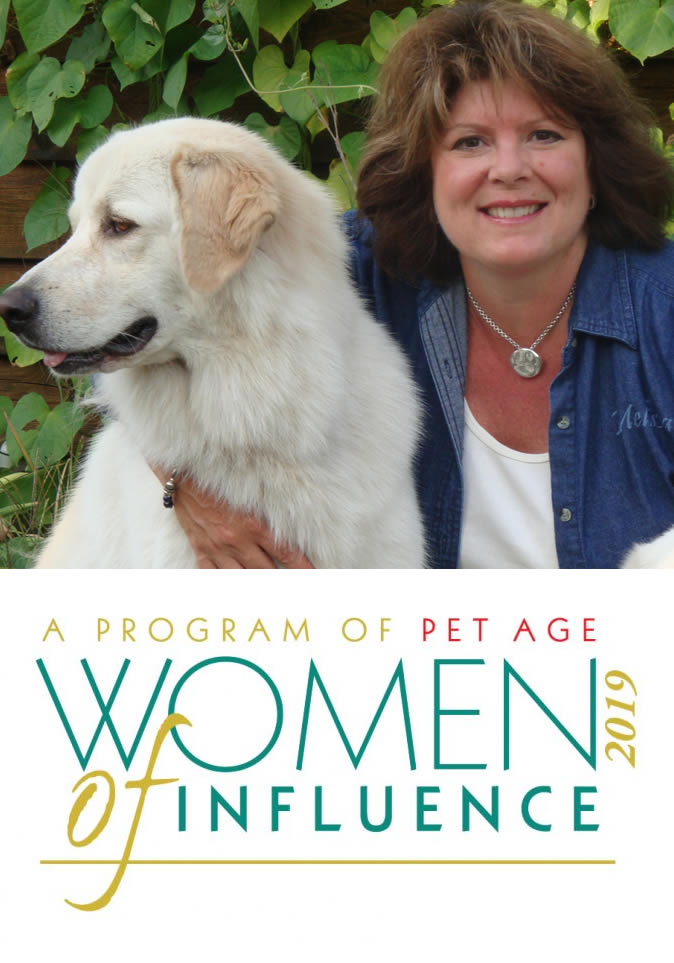<strong>Melissa V:</strong> Hi guys, Melissa here. Today I want to share with you my own personal story of how I got involved with professional pet grooming. I don’t normally share this story a whole lot. I don’t generally like to talk about myself. But I was recently at a meeting with my team, and I don’t know how we got on the topic, but I launched into something about my early career. It was like they just stopped, and they listened.
When I got done talking, they said, “Melissa, you have got to share that story. It is so similar to all of the students and the people that we talk to. We really think that it would resonate and help people, especially when they’re stuck or whether they’re questioning is this the right career for them, is this something they want to get involved in or stay in involved in, and maybe what are the paths that are available out there for somebody if you don’t want to continue to stand at the grooming table.”
I said, “All right, fine. I’ll share.” So it’s a longer story. I mean when I look at my career timeline, I started in probably the late 70s. Obviously, I’m still working within the industry today. So I don’t want to take time to dig into all of the details, so I’m going to kind of hit on some of the highlights in the early days, and some of those really tough transitional periods that I had, that I had to make some decisions whether I stayed with the industry or whether I moved on.
I got involved with professional pet grooming like so many other people do. I was passionate about pets. It was dogs, cats, horses. I mean, if it had fur and four legs, I was all over it. I loved it. I was one of those kids that was actually grooming the neighbor dogs. This is back before I ever even dreamt of being a groomer. I didn’t even know that was a career choice for somebody. I was finding neighbor dogs, and brushing the Collies and the Springers, and making them look better.
I was probably seven or eight, something like that. Okay, so I love the animals. We had dogs of our own. As I was going through high school, I became one of those troubled kids. I was never a very good student. In fact, I was held back early in elementary school. I have a bit of dyslexia, and that still haunts me a little bit today. Not only was I a problem academically as a student who was at a struggle, school was a struggle for me, but I was also pretty much a problem child for my parents as well.
I come from a divorced family, and I lived with my mom and my step-dad, and it just wasn’t going so well. I became very, very rebellious and very challenging. So challenging that it was suggested that I be sent away to a private boarding school. Little did I know at the time, that ultimately probably saved my life. It also gave me the focus and the passion to follow my dreams, and the courage to follow my dreams.
I would have never guessed that a little tiny school called Colorado Rocky Mountain School in Carbondale, Colorado, could do that. But, they had amazing people out there that really helped formulate young people and sent them onto a path that was very positive and productive. Blessing. I was very fortunate. I had a counselor who is a friend and I’m still in touch with her today. Sandy, hey. Love you. But she said… She was my counselor, and even out there I struggled with my academics.
She really fought for me to stay at the school, even though my grades really probably didn’t and shouldn’t have allowed me to stay. I did have a very positive, outgoing personality. Sandy said, “Melissa when you find what you love, there is going to be no stopping you.” Shortly after I graduated from CRMS, I did find my passion. I found it through a boarding kennel, and I started working at this kennel.
At the time, it was a very progressive kennel. Again, this is way back in the day. We had about 200 runs in total. I was kennel help. I scooped poop. I fed. That’s what I did, and I really loved it. I was able to interact with the dogs and I loved the responsibility. I loved working with pets. We did have a grooming department, and one day the groomer was let go. My boss called me at home that night and told me what had happened, and she said to me, “You have a new role. You are no longer kennel help. You are now the groomer.”
I’m the groomer? I have no idea what I’m doing. I’ve never groomed a dog. Okay, I’d bathed some dogs, and I had brushed some dogs on my own, but I had no training, no anything. The first day, my first day as a “groomer”, I had six dogs to get through and no clue how to do them. I had an old book which really wasn’t that great, but I did have a book. I did have my boss, who did some grooming a little bit on the side. So she kind of mentored me and coached me, but for the most part, I was left to my own devices to figure this out. I just had to do it.
After a while, I realized that okay, I kind of like it. It’s kind of fun. I started to get a little bit better at it, feeling a little bit more confident. You don’t take pictures of work that you’re not proud of, so at some point, I pulled out a camera and I started taking pictures of the work that I was doing. Fast forward to early days of the Paragon School of Pet Grooming, and I had found these photos, and I just kind of laughed at them and knew how far I had come from looking at these photos.
I brought them in to show to the students. I didn’t say who had groomed the dogs. I just passed the photos out, and they were sort of passing them through the students, and the students were just in shock. They were in shock, but they’re laughing because the work was so bad compared to what it should have been. One of the students just was staring at one of the photos, and just “Who did this? This is atrocious.”
When I quietly said, “That was my work early on,” they didn’t know what to make of it. I mean, they just didn’t know what to say, what to think, what to do. So I’m here to tell you that you can teach yourself. It certainly helps to have a mentor. It certainly helps to have a program. It has something to speed the process up, but those early photos that those students were looking at, one of them was an English Cocker. The book very clearly said use a 10 or a 15 blade on the back, and draw a straight line down the side of the dog.
I mean truly, it was a stuffed pig with a tutu. I mean it was pathetic. There was no blending. That straight line, it was straight. The other that happens when you have a dog that is flecked with color, when you shave it close you end up with spots, and then the longer coat is still softly mottled. So you’ve got two totally different things going on. I mean it was… Another one was a Schnauzer. I took a forward facing of a Schnauzer, and the book clearly said shave out underneath the eyes.
So what you ended up with was just like this big long mustache. I had no idea you needed to leave fill under the eyes, and that you want straight lines along the sides of the head. On all your rectangular head Terriers. I had no idea. So I shaved it out and gave that dog that hourglass look. Or, the Poodle that I put flood waters on halfway up its leg, and I had no idea that with tied up topknots, that it was hair that was all pulled up. Oh no, what do I do? I shave from the very top above the eyes, halfway back the skull. I shaved it, and then I pulled up the coat.
This is how uneducated I was, and people were paying to have me groom their dogs. They were crazy, but our clients didn’t know. I didn’t know. So I’m going to tell you, if that was my starting point, and today I’ve written one of the top books about professional pet grooming, I speak on the subject, I’m an award-winning stylist. I mean, I have hit so many high points in my career with continuing education and helping other people get, and start, and build a career that truly anybody can do it, guys.
You’ve just got to know where you’ve started from and then move forward from that point. For me, education was really critical in those early days. I didn’t know that much, but what I did have available to me was because my boss was pretty progressive in the industry, she did get periodicals, she got magazines, and she had them up in the storeroom. The restroom was upstairs next to the storeroom, so every time I ran up to use the restroom before I came back down to work I would sneak into that storage room and I would grab one of those magazines and I’d start flipping through it.
You know, I felt like I was looking at Play Girl magazine or something. But what it told me is that there was a much bigger world out there that was just starting. Grooming competitions were just getting started. Certification organizations were just in their early stages. They were just getting started. So I realized that if I really, truly wanted to do this as a career, I had to improve. I had to get better. So I started going to the grooming trade shows. I started sitting ringside the competition. I started finding out what was involved with certification testing.
Honestly, I just jumped in. So I am totally self-taught, but I think that my education, it took a lot longer than what it would take somebody today because of the accessibility to so much more material, so much more education. Educational resources are at your fingertips. I knew that education was the key, and I was able to get a really well-rounded education because I was… Finally, I did. I was very competitive. I stepped into the ring and I learned so much by entering that first grooming competition.
That first grooming competition, I thought I was good. Man, was I wrong. But I went back, I licked my wounds a little bit, and then I went, “I’m going to figure this out.” And so I started to study. I entered the ring not to win, not to place, but to learn. So the ring was a really big foundation of my education. You can learn a lot by having your judges go over your dogs, but also just by the people that were around me. I could look directly into their toolkit and see what tools and products they were using.
I could watch them as they groomed. I could see what their techniques were. Pretty soon, they became my friends. We started sharing ideas, and sharing this and sharing that, and communicating to one another. Just one thing led to another. That’s the one thing that getting out there, not being that one individual person on an island all by yourself, I really encourage people to get out there and communicate with other people in the field. Network with each other, because networking will allow you to grow your career.
It will allow you to share information, and it will put you in a position where opportunities are going to literally fall in your lap. The more you know, the more education you have, the more readily available those opportunities will come to you, and you can actually act on them. So today, one of my key phrases, and our key phrases in all of the educational companies, is “Education is everything.” I cannot stress that enough. Education absolutely is everything.
I have set so many goals for myself. I have hit so many high points in my career. Every time I hit a high point, I just look at what can I do next? How can I help somebody improve what they’ve done? How can I short step it so that they don’t have to struggle maybe the way that I did. When I look at my career timeline, and I know you really can’t see it and it’s backwards, just know that it’s pretty extensive year by year what I’ve been able to accomplish.
Somebody said recently that it’s like, “Wow, you’ve accomplished so much.” To me, it’s basically been almost a 40-year success story because it happened in very small increments, and I just kept going and going, and going, and looking at what I could accomplish next. When my body gave up, and my hands seized up, and I couldn’t stay at the grooming table, that was a real adversity for me but I was able to turn around and say, “Okay, fine. My hands aren’t going to work for grooming anymore, but what else? I’ve learned so much. How can I share what my knowledge is?”
That’s one of the reasons that I started this school. That’s really all of the educational programs or educational products and programs that we’ve been able to put together have all stemmed from, how can I share the wealth of information that I have in my head and get it out there to help others hopefully have as rewarding of a career as I’ve been to have.
My career is not over. That’s one of the coolest parts about the pet grooming industry, is you can make professional grooming be whatever you want it to be, whether you want to be a stay-at-home and just stay small, that’s fine. But if you have aspirations to grow your career, to travel the world, to work with teams of people, to help pets, to help pet parents make their animals be more appealing to be around, if you want to be creative, all of these things come into play with professional pet grooming.
There is no limit to what the career is, other than the limitations that you place on yourself.
 Correcting Behavior During Grooming – Learn the 4 Keys to Successful Pet Handling
Correcting Behavior During Grooming – Learn the 4 Keys to Successful Pet Handling

 How is your summer going? Busy?? Overworked? Feeling stressed? Not being able to ENJOY your summer because you are too busy?
How is your summer going? Busy?? Overworked? Feeling stressed? Not being able to ENJOY your summer because you are too busy? Paragon Pet School is very pleased to announce that our Founder & CEO Melissa Verplank was named a recipient of the Pet Age 2019 Women of Influence Award! Now in its fifth year, the Women of Influence Awards are given by the publication to 30 deserving leaders in the pet industry.
Paragon Pet School is very pleased to announce that our Founder & CEO Melissa Verplank was named a recipient of the Pet Age 2019 Women of Influence Award! Now in its fifth year, the Women of Influence Awards are given by the publication to 30 deserving leaders in the pet industry.